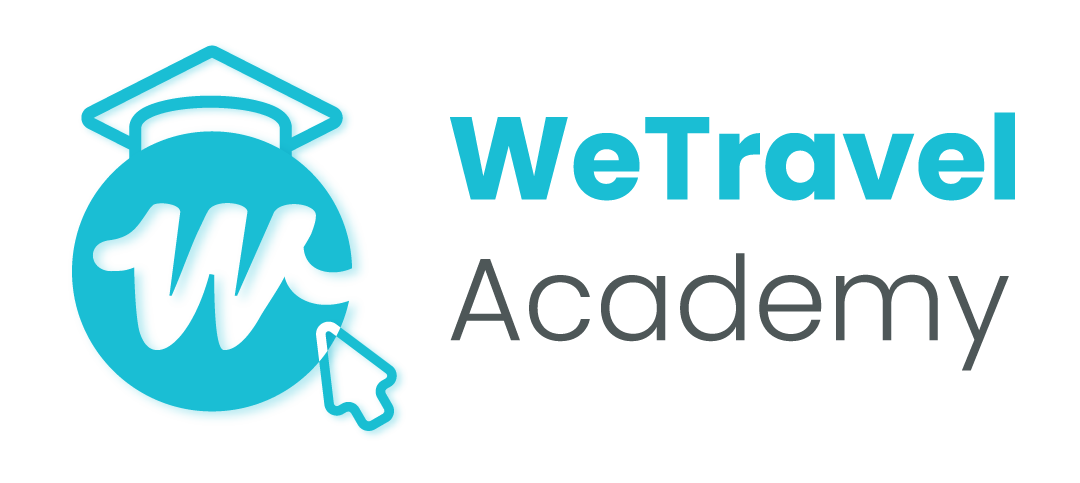Being an online-based travel business means that email is a crucial communication channel that connects you to your clients. When used correctly, email outreach is a tool to build business relationships, connect with clients, and market your tours and travel products. To simplify things for you, we have put together 11 important business email templates that you should be using in your travel business.
Depending on the milestone your clients are at, there are specific communications you should be sending out each step of the way. From when they book to beyond when the experience is over, sending a few strategic emails can add to a seamless booking journey and keep clients engaged with your travel business.

11 Business Email Templates To Engage Your Travel Clients
1) A Welcome Note
This is an important one for setting the tone of new relationships and welcoming travelers to the family. It follows after a person sets up an account profile on your website, or subscribes to your newsletter or travel offer.
Business email templates used for welcome notes are friendly, conversational, and often automated. Include an introduction to your travel company, as well as guidance on what is going to happen next. That could be a booking confirmation once a deposit has been paid, or regular newsletters to keep everyone updated on what is happening in your company.
It should also highlight how the person can contact your team should they have any questions. Another good idea is to provide links and pointers to specific sections on your website, such as your latest tour offerings or blog post.

2) The Booking Confirmation
With any luck, this will be one of the business email templates that you use most frequently.
Once a client has booked your tour or activity and paid their deposit, this email confirms their reservation.
First off, you want to thank them for their business.
After that, confirm what it is that they have just signed up for. Highlight all the important details such as the dates, times, location, number of guests, the amount paid, cancellation policies, possible add-ons, etc.
Finally, include a welcome pack that prepares them for what is ahead. If there is any information that they need in advance to help them get organized ahead of the trip, now is the time to include it. This could be an outline of visa processing times and regulations if you are traveling internationally, or details of the required fitness level if your tour is an active one.
The purpose of this is to give your clients plenty of time to plan their lives and avoid a last-minute rush.
3) Personalized Upsell Email
Every sale you make is an opportunity to upsell or cross-sell your travel products. Even if your client did not opt for any extras at the time of booking, this might become more relevant to them a little further down the line with the deposit out of the way.
Take a look at their reservation to see how you can enhance their travel experience. From there, send a personalized email with offers that you think they would find useful or relevant for their trip.
As an example, your international clients may decide they now wish to purchase travel insurance from you after all. Alternatively, they could decide that the extra cooking and tasting class is something that they feel like doing.
4) Travel Dossier and Itinerary
As soon as your clients pay the full balance due for their tour or activity, it is time to send a dossier and itinerary.
This is a detailed document that provides them with all the necessary information before the experience takes place. It is usually most useful just before they leave on the journey as it includes things like packing tips, meeting and departure points, emergency contacts, weather forecasts, etc.

5) Newsletters
Newsletters are business email templates used to engage potential, current, and repeat clients. Use this newsy email to curate and share some of the latest industry news, your amazing promotions, or recently published blog posts among other things.
The idea is to keep the people who have signed up, engaged and aware of what is happening with your business and the industry that they are interested in. While they may not be ready to make a purchase, regularly providing them with useful information and sending them back to your website will keep your travel business fresh in their minds.
Pro Tips:
- Encourage people to share your email newsletter or send it to a friend if they have found it useful
- Be consistent – decide whether you want to send this weekly, fortnightly, or even monthly
- Include an unsubscribe or manage preferences link to your newsletter. Not everyone will be a repeat client and the last thing you want to do is unintentionally spam them
6) Latest Travel Offers
While this can go out in your newsletter, initially, it is more beneficial to send a separate email containing the details of your newest travel offers, tours, activities, or retreats.
With just the information related to new products included, you can place a greater focus on the fabulous new experiences you have on offer. It is a means to update your clients and potentially get new sales.
Your latest offers can always be marketed as:
- Seasonal: Summer Sale, Early Bird Deals, Spring Break Offer, etc.
- Date-specific: Valentine’s Getaway Sale, Cyber Monday, Black Friday Deals, etc.
- Limited-time: Flash Sale, Last available spaces, End-of-summer Sale, etc.
And so much more! Put your creativity to the test and make sure to put out offers that resonate with your customers. Also, if you’re adding conditions like a “valid through” disclaimer, make sure you send these emails out with enough time for your clients to make a decision and plan ahead.
7) Personalized Emails
Personalized emails let your clients know that you value them. It can be as simple as offering them a free activity or discount code on their birthday, or reminding them of the great time they had on the anniversary of the first tour booked with you.
Going the extra mile to create a one-on-one connection can prove to be a valuable reminder of your travel business.
You can also tie these personalized emails to referral programs. Make your clients feel special and offer them a personalized promo code for them to share with friends and family.

8) Post-Trip Thank You
Sending an email to your clients post-trip to say thank you does two things.
First, it means you end off on a good note, which can help to keep communication lines open in the future. The post-trip email speaks volumes about how much you care for your customers and establish a long-term relationship with them that will result in more business for you. Even if they may not be the ones traveling next time, maybe a referral they made based on their good impression is.
Second, it gives you a chance to ask them to leave a review of the experience they just had. Building a strong review profile is a great marketing tool for your travel business, and happy clients fresh off your tour will be eager to share their thoughts on it with their peers if asked to do so.
9) PR Pitch Email
If your travel company is doing something cool, embarking on a sustainability campaign, launching an internship program, etc. spread the word! Whether you have a PR professional within your team or you are a great communicator, public relations are very important for your brand.
PR pitch emails are outreach efforts directed toward news outlets, bloggers, journalists, or public figures to showcase the value of a story/initiative and why it should be addressed. To define who to write to, you need to deeply understand your target audience and customer profiles: what information they consume, where they get it from, and what will resonate with them and enhance your brand’s core values.
These emails need to be short and sweet, unambiguous and concise. Nevertheless, the most crucial part of the email is definitely the subject line. Many journalists, media outlets, and public figures receive hundreds of emails per day, so it’s not uncommon for them to just skim through their inboxes and click on the most relevant subject lines they encounter. A great tip for this can be adding “PR Pitch” to the beginning of the email and then typing in the specifics.
10) New Product Launch Email
Emails will always be an excellent way to spread the news with your existing client base whenever you want to promote a new tour, retreat, or trip planned. Showcasing new offers and experiences to people that have already traveled with you and know the quality of your products is an effective way to re-engage and drive more repeat business.
A new product launch email should always showcase the value of the experience and what makes it different from your competitors and your existing tour catalog. If you have the chance to make it more visual and inspirational than informative, that will add a lot to the email and the engagement it’ll generate with your customers.
Remember that the email should serve as a quick and attractive overview of your product rather than a complete description. The goal of these emails is to get your contacts to click on links to your website that contain more information about the tour or have them reply with inquiries.

11) Re-engagement Email
Re-engagement or re-marketing emails are the best way to “wake up” contacts that haven’t interacted with your business in a while. Engaging with these contact lists is vital for your business because the more active and engaged users your have (translated into email open rates, click rates, and overall interaction) the more positive signals will internet service providers receive, keeping your emails out of the much-dreaded spam lists.
Re-engagement emails need to offer an incentive or great information to gain your recipient’s interest again. You can tailor your email’s content based on what list of contacts you’re targeting. Here are some of the options you can use:
- Contacts that requested information and never replied to your message
- Contacts that couldn’t travel with you because of budget reasons
- Contacts who couldn’t travel with you because of availability
- Contacts that traveled with you in the past and didn’t book again
The key here is to understand why they became disengaged in the first place and try to target that pain point in your email. If the reason was budget, you could try offering a discount for their next trip. If the issue was the lack of availability, you can offer early booking access. For contacts that you never heard of again, there are a thousand possibilities! You can try showcasing what makes your travel company unique or share different options for the tour they originally requested.
For these emails, as well as in the newsletter, it’s important to offer your contact the option to unsubscribe to maintain a healthy contact list.
Final Thoughts
Some parting advice – put yourself on the receiving end. Are your emails adding value, or are they overly promotional, too frequent, not relevant? Use these business email templates wisely to maximize your connection with travelers, and optimize their experience with your company.
Email is not going away, every year it grows stronger! So you need to step up your game in order to win the engagement race in a sea of crowded inboxes. Always make sure you understand your audience, their interests, needs, and formats, to keep a healthy and engaged contact list that’s ready to convert or become your brand’s top ambassador.
New resources, straight to your inbox
We’re committed to your privacy. WeTravel uses the information you provide to us to contact you about our relevant content, products, and services. You may unsubscribe at any time.




